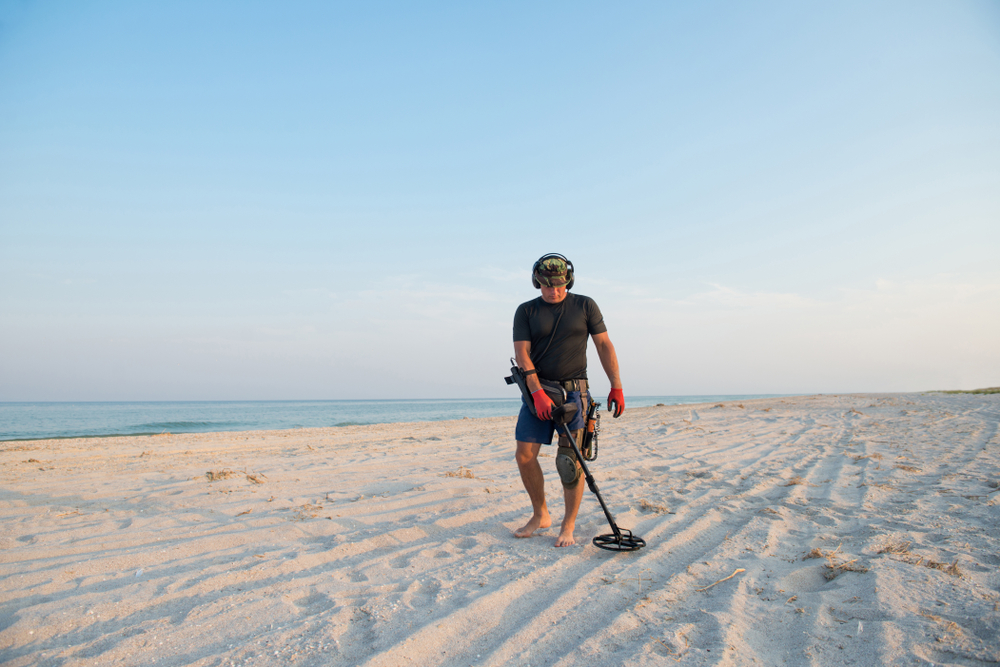Metal detecting is a thrilling and rewarding hobby that allows you to uncover hidden treasures from the past. Whether you are searching for coins, historical artifacts, or even buried treasure legends, metal detecting can provide hours of excitement and adventure. In this post, we will explore various techniques and tips for successful metal detecting in different settings.
1. Beach Metal Detecting Techniques:
Beach metal detecting is a popular activity due to the possibility of finding lost jewelry, coins, and other items left behind by beachgoers. To maximize your success on the beach, it’s important to consider certain techniques:
a) Timing: The best time to go beach metal detecting is during low tide when more sand is exposed. This increases your chances of finding items that may have been covered by the water.
b) Search Areas: Focus on high traffic areas such as entrances/exits to the beach or near lifeguard stands where people tend to gather. Additionally, search along towel lines where sunbathers often lose items.
c) Use a Sand Scoop: A sand scoop is an essential tool for beach metal detecting. It allows you to quickly dig through sand and locate targets without damaging them.
d) Wet Sand vs Dry Sand: Depending on your location, you may find better results searching either in wet sand (closer to the waterline) or dry sand (further away). Experiment with both areas to see which yields more finds.
2. Metal Detecting in Urban Areas:
Urban areas offer a unique opportunity for metal detecting enthusiasts as they are filled with history dating back centuries. Here are some tips for urban metal detecting:
a) Research Local History: Before heading out into an urban area with your metal detector, research its history. Look for old maps or records that indicate locations of previous settlements or historical events.
b) Permission Matters: Always seek permission before entering private property or public spaces like parks and playgrounds. Respect local regulations regarding metal detecting to avoid any legal issues.
c) Embrace the Grid Technique: In urban areas, it can be overwhelming to search without a methodical approach. Use a grid pattern, systematically covering one small area at a time. This way, you won’t miss any potential hotspots.
d) Focus on Sidewalks and Pathways: Urban sidewalks and pathways are often overlooked when it comes to metal detecting. However, they can yield interesting finds such as coins dropped by pedestrians or even discarded jewelry.
3. Metal Detecting in Abandoned Buildings:
Exploring abandoned buildings with a metal detector is like stepping into a time capsule. From old coins to forgotten relics, these locations offer tremendous opportunities for discovery:
a) Safety First: Ensure your safety before entering any abandoned building. Be cautious of structural integrity and potential hazards.
b) Research the Building’s History: Discovering the history of an abandoned building will give you insight into what items you may find there. Look for clues about its previous use or inhabitants.
c) Start with Open Areas: Begin your search in open spaces such as courtyards or gardens surrounding the building. These areas were more likely to have been used regularly and could hold hidden treasures.
d) Pay Attention to Structural Features: Focus on areas where people might have accidentally dropped items, such as stairwells, doorways, or window sills. Also check around fireplaces or other gathering spots where people may have left behind valuables.
4. Tips for Finding Coins with a Metal Detector:
Coins are one of the most common targets for metal detectorists due to their prevalence throughout history. Here are some tips specifically aimed at successful coin hunting:
a) Target High Traffic Areas: Public parks, picnic spots, playgrounds, and sports fields tend to accumulate lost coins from various activities over time.
b) Adjust Discrimination Settings: Most modern metal detectors allow users to discriminate against certain types of metals. Set your discrimination level to focus primarily on coins and ignore unwanted items like aluminum foil or iron nails.
c) Use a Pinpointer: A pinpointer is a handheld metal detector that helps you locate targets precisely. It saves time during the digging process by pinpointing the exact location of the coin.
d) Digging Technique: When excavating a target, dig slowly and carefully to avoid damaging the coin. Start by removing smaller amounts of soil with a trowel or handheld shovel before using your hands to gently uncover the target.
5. Uncovering Historical Artifacts with a Metal Detector:
If you are interested in discovering historical artifacts, understanding the history and potential hotspots is crucial:
a) Research Local History: Study maps, historical records, and books to identify areas where significant events took place in the past. This will guide you towards locations likely to hold valuable artifacts.
b) Visit Historical Society or Museums: Consult local historical societies or museums for information about archaeological sites or areas worth investigating.
c) Understand Artifact Preservation: Once you unearth an artifact, handle it carefully to avoid causing damage. If possible, consult with local experts on proper cleaning techniques specific to that artifact type.
d) Share Your Finds Responsibly: If you discover historically significant artifacts, consider reporting them to relevant authorities so they can be properly documented and preserved for future generations.
These are just some of the many aspects of metal detecting that can bring excitement and fulfillment as you embark on this journey into our collective past. By following these techniques and tips while respecting ethical guidelines, you can enhance your chances of making fascinating discoveries while preserving history for generations to come.
